With Easter a few days away, everyone is probably worried about what to cook. Personally I'm more vested in which wines to serve, to match those foods. So I decided to find a trio of wines I could recommend. Thus I'm presenting a wine for each of three courses; Appetizers, Main Course and Dessert.
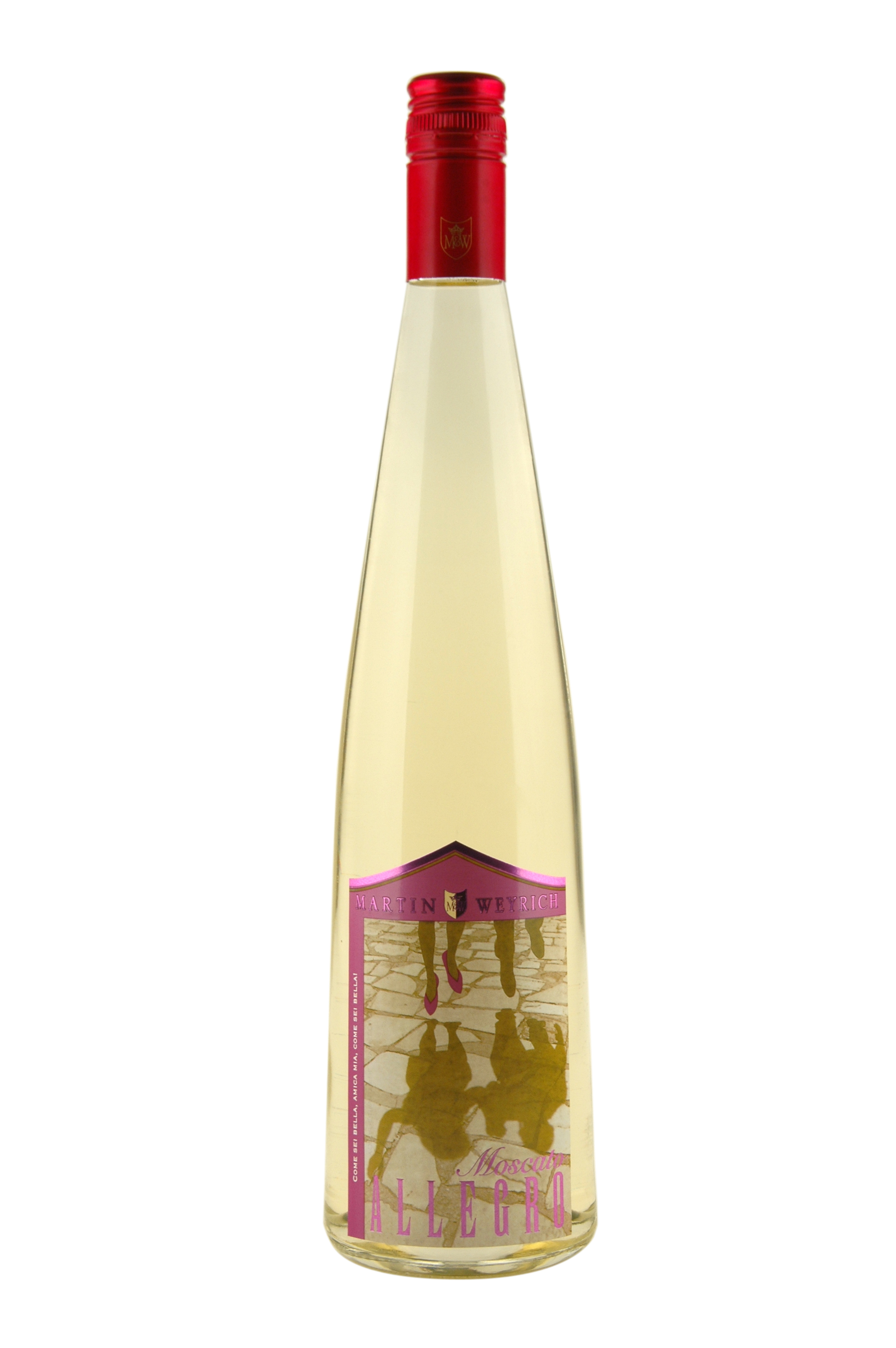 First up is the Martin & Weyrich Moscato Allegro. This offering is based on the Muscat Canelli grape. The intent with this wine is to make a Moscato in the Italian style. Martin & Weyrich even used the bottle that is traditional for this in Italy. Alcohol is a modest 7.8%. 65,000 cases of this wine were produced and the suggested retail price is $12.
First up is the Martin & Weyrich Moscato Allegro. This offering is based on the Muscat Canelli grape. The intent with this wine is to make a Moscato in the Italian style. Martin & Weyrich even used the bottle that is traditional for this in Italy. Alcohol is a modest 7.8%. 65,000 cases of this wine were produced and the suggested retail price is $12.
The nose of this wine is loaded with orchard fruits such as white peach and apricot. A touch of spice also makes its presence known. Throughout the palate the Moscato Allegro is incredibly refreshing. White peach notes continue and are joined by some lighter citrus notes. Honey notes emerge on the finish, which is zesty and full of lingering spice notes.
This Moscato will be perfect on Easter served as a welcome wine, or paired with just about any appetizer. It's light bodied with some pleasing sweetness. What I like best about this wine as the starter is that it won't bog anyone down with too much alcohol or sweetness. It has just enough, and that's balanced by excellent acidity. It's likely your Easter guests will be hesitant to move on to the next wine when they get a hold of this one.
The main course wine is from Two Angels, headquartered in Napa. The 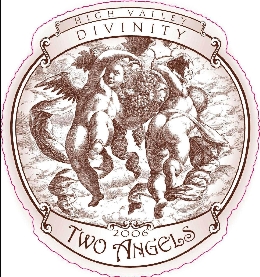 2006 Divinity is produced from fruit sourced in High valley. This blend is 52% Syrah, 22% Grenache, 20% Mouvedre and 6% Petite Sirah. Grapes were sourced at Shannon Ridge Vineyards. This blend was aged in a combination of French (70%) and American (30%) oak barrels; 35% of them were new. 500 cases of this offering were produced and the suggested retail price is $25.
2006 Divinity is produced from fruit sourced in High valley. This blend is 52% Syrah, 22% Grenache, 20% Mouvedre and 6% Petite Sirah. Grapes were sourced at Shannon Ridge Vineyards. This blend was aged in a combination of French (70%) and American (30%) oak barrels; 35% of them were new. 500 cases of this offering were produced and the suggested retail price is $25.
Blueberry, plum and raspberry aromas are underscored by touches of vanilla and nutmeg in the nose of this wine. The palate is absolutely loaded with rich, dark, explosive fruit notes that envelop the palate and scream out with unadulterated joy. Hints of white pepper, bright red cherry, and toasty oak emerge in the lengthy finish. This wine keeps beckoning you back to the glass for another sip. Divinity has a firm but yielding structure and excellent acidity.
The question is Ham or Lamb? That's what most people will serve on Easter in the United States. Either way Divinity has you covered and will make an excellent accompaniment. If you're Italian like me and your family insists on serving a heavy pasta dish after the antipasto and before the meat course, have no fear, Divinity has your back. This wine will match well with Ravioli, Lasagna or even Angel Hair with Marinara sauce. It's a delicious wine and will impress both the wine geeks in your family and the novices simply looking for a glass of red to pair with their food.
 Dessert is important for any Holiday meal and Easter is no exception. My recommendation this holiday is to go with a Late Harvest Zinfandel. Specifically the 2006 from Clos LaChance. This wine is made from 100% Zinfandel. The fruit is sourced from a specific block of Zinfandel that is grown specifically for this wine. Alcohol is 16%, modest for a Late Harvest Zin. A mere 84 cases of this selection were produced and the suggested retail price is $26.00.
Dessert is important for any Holiday meal and Easter is no exception. My recommendation this holiday is to go with a Late Harvest Zinfandel. Specifically the 2006 from Clos LaChance. This wine is made from 100% Zinfandel. The fruit is sourced from a specific block of Zinfandel that is grown specifically for this wine. Alcohol is 16%, modest for a Late Harvest Zin. A mere 84 cases of this selection were produced and the suggested retail price is $26.00.
This Late Harvest Zinfandel has a bright nose. Cherries are prominent and are joined by hints of apple that underscore them. Raspberry, strawberry and a host of other berry fruit notes dominate the palate which is full flavored but a touch lighter in body than the average Late Harvest Zinfandel. The finish brings out some chocolate notes, black pepper, lingering light mineral and spice qualities. This Zin can be dessert on it's own or match it with chocolate or berry topped cheesecake. Either way it's a perfect, and slightly decadent way to end a celebratory holiday meal.
Please take a moment to vote for my blog.
 When I’m headed to a party, or planning to entertain masses in my home I look for crowd pleasing wines to serve. Left to my own devices I gravitate towards the esoteric; most though want something tasty to drink alongside their sandwich. So in these cases I often seek out blends. They can offer a range of flavors to keep savvier folks interested, and plenty of out front satisfaction for those who just want something that goes down easy. Often times these blends are ones that includes Zinfandel or Syrah. Today I’ll look at one from California that is widely available.
Apothic Red 2008 California Winemaker’s Blend was produced using fruit from vineyards throughout California. This offering is a blend of Syrah, Zinfandel, and Merlot. The alcohol content is a modest 13.1% and this wine is available all over the country for a suggested retail price of $14.
When I’m headed to a party, or planning to entertain masses in my home I look for crowd pleasing wines to serve. Left to my own devices I gravitate towards the esoteric; most though want something tasty to drink alongside their sandwich. So in these cases I often seek out blends. They can offer a range of flavors to keep savvier folks interested, and plenty of out front satisfaction for those who just want something that goes down easy. Often times these blends are ones that includes Zinfandel or Syrah. Today I’ll look at one from California that is widely available.
Apothic Red 2008 California Winemaker’s Blend was produced using fruit from vineyards throughout California. This offering is a blend of Syrah, Zinfandel, and Merlot. The alcohol content is a modest 13.1% and this wine is available all over the country for a suggested retail price of $14.
 The 2009 Big House White was produced from fruit sourced at different vineyard sites throughout California. This wine is a blend of Malvasia Bianca (56%), Muscat Canelli (22%), Viognier (18%) and Rousanne (4%). This wine underwent temperature controlled fermentation prior to bottling. This offering has a suggested retail price of $9.99.
The 2009 Big House White was produced from fruit sourced at different vineyard sites throughout California. This wine is a blend of Malvasia Bianca (56%), Muscat Canelli (22%), Viognier (18%) and Rousanne (4%). This wine underwent temperature controlled fermentation prior to bottling. This offering has a suggested retail price of $9.99. The 2009 Big House Red was also produced from fruit sourced throughout California. This offering is a blend of Petite Sirah (27%), Syrah (14.5%), Montepulciano (8.6%), Barbera (8.2%), Nero d’Avola (6.4%), Tempranillo (6.1%) and a host of others in smaller and smaller quantities. This wine underwent temperature controlled fermentation. Some lots underwent malolactic fermentation and barrel aging in primarily neutral oak. This wine has a suggested retail price of $9.99.
The 2009 Big House Red was also produced from fruit sourced throughout California. This offering is a blend of Petite Sirah (27%), Syrah (14.5%), Montepulciano (8.6%), Barbera (8.2%), Nero d’Avola (6.4%), Tempranillo (6.1%) and a host of others in smaller and smaller quantities. This wine underwent temperature controlled fermentation. Some lots underwent malolactic fermentation and barrel aging in primarily neutral oak. This wine has a suggested retail price of $9.99. Today I’ll look at a couple of wines from Italian producer
Today I’ll look at a couple of wines from Italian producer  When it comes to red wine from Tuscany the first thing that springs to mind is Sangiovese. That Italian grape is responsible for some of the world’s very best wines. For a number of years now international varietals have of course also made a foothold there. Today I’ll look at a blend that combines the local and the international; most often these are referred to as Super Tuscans.
The
When it comes to red wine from Tuscany the first thing that springs to mind is Sangiovese. That Italian grape is responsible for some of the world’s very best wines. For a number of years now international varietals have of course also made a foothold there. Today I’ll look at a blend that combines the local and the international; most often these are referred to as Super Tuscans.
The 
 One of the producers that have hit my radar over the last couple of years is
One of the producers that have hit my radar over the last couple of years is  When it comes to Australian wine,
When it comes to Australian wine, 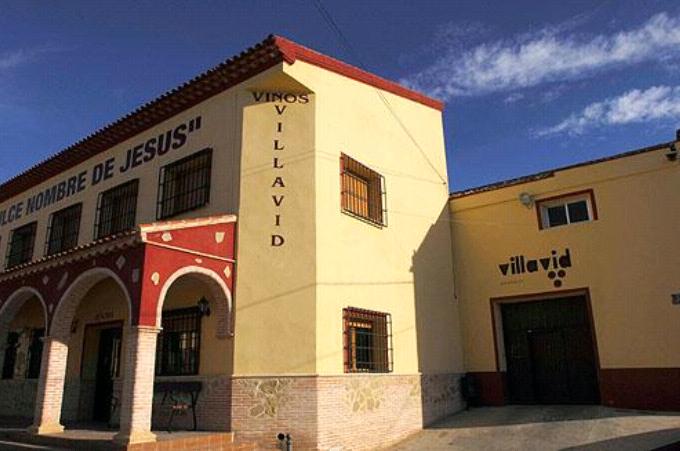 I attended the
I attended the 
 Single varietal wines are probably the ones most American consumers have historically identified with and looked for. There now seems to be a growing segment in the US that realizes the power of blended wines. As we mature as a wine consuming culture in the US there are more and more folks that are comfortable straying outside of their safe zone and experimenting. Blended wines, whether classic Bordeaux style blends or otherwise can offer many positives. Of course at their best the goal is to achieve the best possible wine using the highest quality fruit a producer has available. In addition to that sometimes its as simple as some Merlot being blended in to a Cabernet for additional complexity. In any case while the single varietal expressions have their place too, blended wines are their own unique discipline. Today I'll look at one from Bodega Septima.
The
Single varietal wines are probably the ones most American consumers have historically identified with and looked for. There now seems to be a growing segment in the US that realizes the power of blended wines. As we mature as a wine consuming culture in the US there are more and more folks that are comfortable straying outside of their safe zone and experimenting. Blended wines, whether classic Bordeaux style blends or otherwise can offer many positives. Of course at their best the goal is to achieve the best possible wine using the highest quality fruit a producer has available. In addition to that sometimes its as simple as some Merlot being blended in to a Cabernet for additional complexity. In any case while the single varietal expressions have their place too, blended wines are their own unique discipline. Today I'll look at one from Bodega Septima.
The 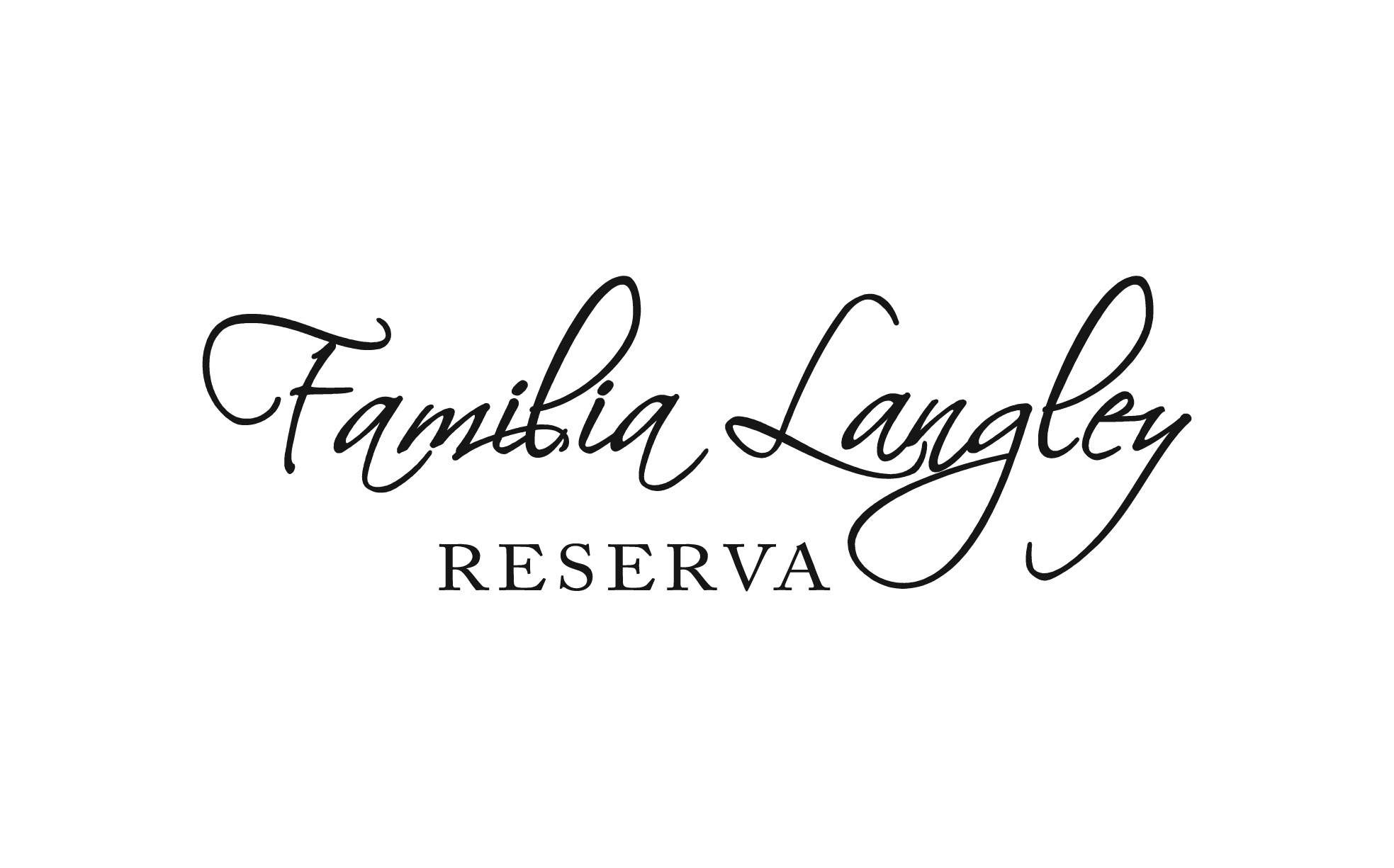 It was just about a year ago that I first tasted the offerings from Argentine producer
It was just about a year ago that I first tasted the offerings from Argentine producer  Blended wines can be particularly interesting. This is especially true in the case of a wine like
Blended wines can be particularly interesting. This is especially true in the case of a wine like  Spain's
Spain's 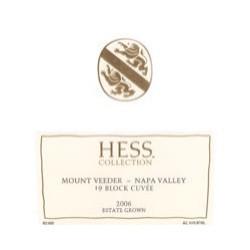 I’ve been fond of wines form Mount Veeder for many years now. But over the last year I’ve made a more concerted effort to try more of them. While I think a wide array of varietals shine up on Mt. Veeder the classic Bordeaux grapes are amongst those I feel stand out most often. Today I’m going to take a look at a selection from
I’ve been fond of wines form Mount Veeder for many years now. But over the last year I’ve made a more concerted effort to try more of them. While I think a wide array of varietals shine up on Mt. Veeder the classic Bordeaux grapes are amongst those I feel stand out most often. Today I’m going to take a look at a selection from  winery in question is simply trying to imitate a style. However when a producer aspires to make the best blend possible with the fruit available to them, all the while showing off their terroir, they have a much better chance of hitting the mark. Today I'll look at the third wine from
winery in question is simply trying to imitate a style. However when a producer aspires to make the best blend possible with the fruit available to them, all the while showing off their terroir, they have a much better chance of hitting the mark. Today I'll look at the third wine from  Malbec is more closely identified with Argentina than any other single grape variety. There's good reason for that; while it’s made elsewhere Malbec absolutely flourishes and reaches its apex there. The wide array of styles in which Malbec is made reminds me of how diverse Zinfandel can be in California. Some choose to make it brash and exuberant while others go for more of a refined and elegant style. Each has its benefits. Not surprisingly
Malbec is more closely identified with Argentina than any other single grape variety. There's good reason for that; while it’s made elsewhere Malbec absolutely flourishes and reaches its apex there. The wide array of styles in which Malbec is made reminds me of how diverse Zinfandel can be in California. Some choose to make it brash and exuberant while others go for more of a refined and elegant style. Each has its benefits. Not surprisingly  A number of years ago someone poured me a glass of Seven Deadly Zins, that was my first experience with the
A number of years ago someone poured me a glass of Seven Deadly Zins, that was my first experience with the  First up is the
First up is the  2006 Divinity is produced from fruit sourced in High valley. This blend is 52% Syrah, 22% Grenache, 20% Mouvedre and 6% Petite Sirah. Grapes were sourced at Shannon Ridge Vineyards. This blend was aged in a combination of French (70%) and American (30%) oak barrels; 35% of them were new. 500 cases of this offering were produced and the suggested retail price is $25.
2006 Divinity is produced from fruit sourced in High valley. This blend is 52% Syrah, 22% Grenache, 20% Mouvedre and 6% Petite Sirah. Grapes were sourced at Shannon Ridge Vineyards. This blend was aged in a combination of French (70%) and American (30%) oak barrels; 35% of them were new. 500 cases of this offering were produced and the suggested retail price is $25. Dessert is important for any Holiday meal and Easter is no exception. My recommendation this holiday is to go with a Late Harvest Zinfandel. Specifically the 2006 from
Dessert is important for any Holiday meal and Easter is no exception. My recommendation this holiday is to go with a Late Harvest Zinfandel. Specifically the 2006 from 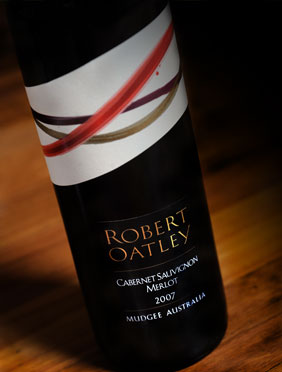 components come together, they're greater than the sum of the parts. In Australia blending Cabernet Sauvignon with Shiraz is very popular. So much so that it seems to have influenced producers in other regions to follow suit. When they're done well, they can be intriguing blends, with both varietals strutting their stuff, so to speak. The blend I'm looking at today is from Australia, but it's not Cabernet and Shiraz.
The 2007
components come together, they're greater than the sum of the parts. In Australia blending Cabernet Sauvignon with Shiraz is very popular. So much so that it seems to have influenced producers in other regions to follow suit. When they're done well, they can be intriguing blends, with both varietals strutting their stuff, so to speak. The blend I'm looking at today is from Australia, but it's not Cabernet and Shiraz.
The 2007 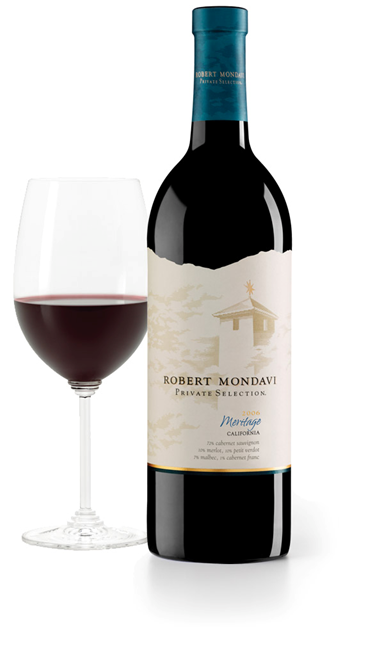 Winery, numerous subsidiaries became part of the Mondavi empire. The Private Selection wines are one of those off shoots. These wines tend to have a suggested retail just above $10 and can provide a gateway for people at the beginning of their wine exploration, as well as everyday value for more seasoned wine drinkers. Today I'll look at their current release Meritage and see what it offers.
The 2006
Winery, numerous subsidiaries became part of the Mondavi empire. The Private Selection wines are one of those off shoots. These wines tend to have a suggested retail just above $10 and can provide a gateway for people at the beginning of their wine exploration, as well as everyday value for more seasoned wine drinkers. Today I'll look at their current release Meritage and see what it offers.
The 2006 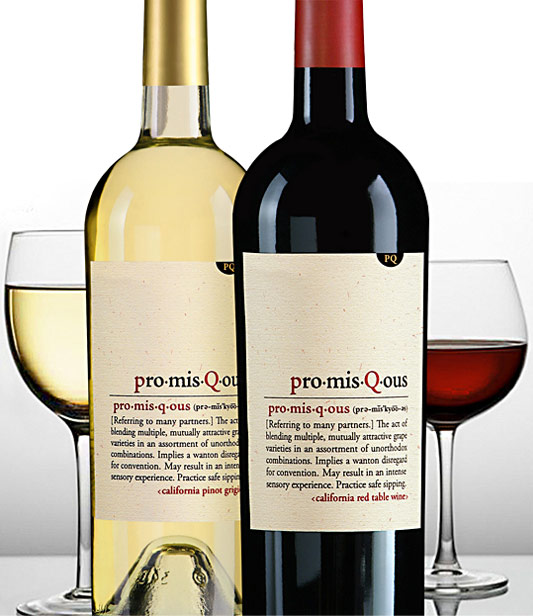 When tasting a wine it's important to take into account what the intent and purpose is. Some wines are crafted with the goal of scoring 90 + points in major wine publications. Others are made with the intent of producing wines reflective of their place. And then there are wines produced with the purpose of providing everyday drinking value. The
When tasting a wine it's important to take into account what the intent and purpose is. Some wines are crafted with the goal of scoring 90 + points in major wine publications. Others are made with the intent of producing wines reflective of their place. And then there are wines produced with the purpose of providing everyday drinking value. The